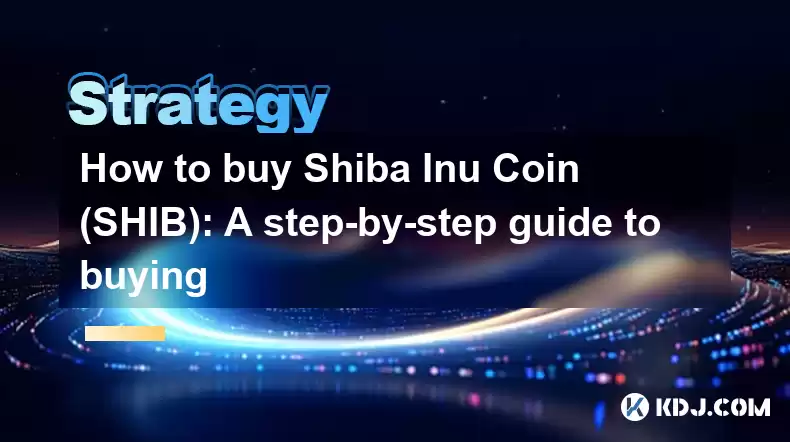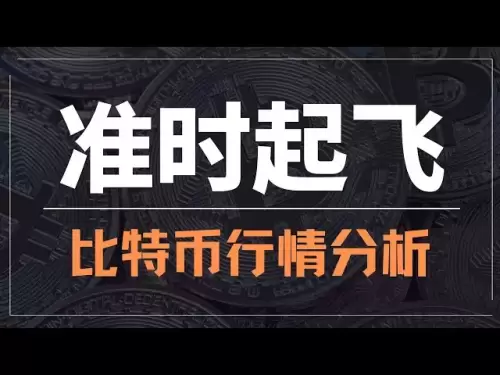-
 Bitcoin
Bitcoin $116400
0.87% -
 Ethereum
Ethereum $3819
3.86% -
 XRP
XRP $3.048
1.62% -
 Tether USDt
Tether USDt $1.000
0.03% -
 BNB
BNB $777.2
0.60% -
 Solana
Solana $169.3
0.46% -
 USDC
USDC $0.0000
0.02% -
 TRON
TRON $0.3414
2.06% -
 Dogecoin
Dogecoin $0.2126
3.33% -
 Cardano
Cardano $0.7527
1.21% -
 Hyperliquid
Hyperliquid $38.86
1.02% -
 Sui
Sui $3.683
5.27% -
 Stellar
Stellar $0.4048
1.45% -
 Chainlink
Chainlink $17.91
6.62% -
 Bitcoin Cash
Bitcoin Cash $576.9
1.29% -
 Hedera
Hedera $0.2487
1.03% -
 Ethena USDe
Ethena USDe $1.001
-0.01% -
 Avalanche
Avalanche $22.46
1.07% -
 Litecoin
Litecoin $120.8
1.69% -
 UNUS SED LEO
UNUS SED LEO $8.963
-0.30% -
 Toncoin
Toncoin $3.301
2.33% -
 Shiba Inu
Shiba Inu $0.00001250
1.13% -
 Uniswap
Uniswap $10.06
3.45% -
 Polkadot
Polkadot $3.731
1.56% -
 Dai
Dai $1.000
0.01% -
 Bitget Token
Bitget Token $4.416
1.58% -
 Cronos
Cronos $0.1482
3.73% -
 Monero
Monero $250.0
-12.34% -
 Pepe
Pepe $0.00001075
2.16% -
 Aave
Aave $274.6
4.17%
How to buy Shiba Inu Coin (SHIB): A step-by-step guide to buying
To buy SHIBA, choose a reputable exchange like Binance or Coinbase, set up a secure wallet, deposit funds, purchase SHIB, and optionally transfer it to your personal wallet for safety.
Apr 16, 2025 at 07:00 am

Buying Shiba Inu Coin (SHIB) can be an exciting venture into the world of cryptocurrencies. As a popular meme coin, SHIB has garnered significant attention and a dedicated community. This guide will walk you through the process of purchasing SHIB, ensuring you understand each step thoroughly.
Choosing a Cryptocurrency Exchange
The first step in buying Shiba Inu Coin is to select a reputable cryptocurrency exchange that supports SHIB. Some popular exchanges that list SHIB include Binance, Coinbase, and Crypto.com. It's essential to choose an exchange that is user-friendly, secure, and offers the trading pairs you need.
- Visit the exchange's website and sign up for an account. You will need to provide personal information and complete a verification process, which may include submitting identification documents.
- Once your account is verified, you can proceed to the next step.
Setting Up Your Wallet
Before you can buy SHIB, you need a place to store it. A cryptocurrency wallet is essential for securely holding your SHIB tokens. There are several types of wallets, including software wallets, hardware wallets, and exchange wallets.
- Download and install a software wallet like MetaMask or Trust Wallet, which supports SHIB. Follow the wallet's instructions to set up your account and secure it with a strong password and, if available, two-factor authentication.
- Alternatively, you can use a hardware wallet like Ledger or Trezor for enhanced security. These devices store your private keys offline, making them less vulnerable to hacking.
- If you prefer to keep your SHIB on the exchange, you can use the exchange's built-in wallet. However, this option is generally less secure than using a personal wallet.
Depositing Funds into Your Exchange Account
To buy SHIB, you need to deposit funds into your exchange account. Most exchanges accept deposits in fiat currencies like USD or EUR, as well as other cryptocurrencies like Bitcoin (BTC) or Ethereum (ETH).
- Navigate to the deposit section of your exchange account and select the currency you wish to deposit.
- Follow the instructions to complete the deposit. This may involve transferring funds from your bank account or another cryptocurrency wallet.
- Wait for the funds to be credited to your exchange account. This can take anywhere from a few minutes to several days, depending on the method used.
Buying Shiba Inu Coin (SHIB)
With funds in your exchange account, you're ready to buy SHIB. The process varies slightly depending on the exchange, but the general steps are similar.
- Go to the trading section of the exchange and search for the SHIB trading pair you want to use. Common pairs include SHIB/USDT, SHIB/BTC, and SHIB/ETH.
- Enter the amount of SHIB you want to buy or the amount of your chosen currency you want to spend. The exchange will calculate the equivalent amount based on the current market rate.
- Review your order and confirm the purchase. Once the order is executed, the SHIB will be credited to your exchange wallet.
Transferring SHIB to Your Personal Wallet
For added security, it's advisable to transfer your SHIB from the exchange to your personal wallet. This step is optional but recommended for long-term storage.
- Open your personal wallet and find the SHIB receiving address. This is a long string of characters that you will use to receive your SHIB.
- Return to your exchange account and navigate to the withdrawal section. Select SHIB as the cryptocurrency you want to withdraw.
- Enter the receiving address from your personal wallet and the amount of SHIB you want to transfer.
- Review the transaction details and confirm the withdrawal. The SHIB will be sent to your personal wallet, and the transaction may take a few minutes to an hour to complete.
Monitoring Your Investment
After purchasing SHIB, it's important to keep an eye on your investment. Use the tools provided by your exchange or wallet to track the price and performance of SHIB.
- Set up price alerts to notify you of significant changes in the SHIB price.
- Stay informed about news and developments related to SHIB and the broader cryptocurrency market. This can help you make informed decisions about when to buy or sell.
Frequently Asked Questions
Q: Can I buy SHIB directly with a credit card?
A: Yes, some exchanges like Binance and Coinbase allow you to buy SHIB directly with a credit card. However, be aware that these transactions may incur higher fees and could be subject to your credit card's cash advance policies.
Q: Is it safe to store SHIB on an exchange?
A: While exchanges have security measures in place, storing large amounts of SHIB on an exchange is generally less secure than using a personal wallet. For long-term storage, it's recommended to transfer your SHIB to a hardware wallet.
Q: How can I sell my SHIB?
A: Selling SHIB is similar to buying it. Navigate to the trading section of your exchange, select the SHIB trading pair, enter the amount you want to sell, and confirm the order. The funds will be credited to your exchange account, and you can withdraw them to your bank account or another wallet.
Q: What are the tax implications of buying and selling SHIB?
A: The tax implications of buying and selling SHIB depend on your country's tax laws. In many jurisdictions, profits from cryptocurrency transactions are subject to capital gains tax. It's advisable to consult with a tax professional to understand your specific obligations.
Disclaimer:info@kdj.com
The information provided is not trading advice. kdj.com does not assume any responsibility for any investments made based on the information provided in this article. Cryptocurrencies are highly volatile and it is highly recommended that you invest with caution after thorough research!
If you believe that the content used on this website infringes your copyright, please contact us immediately (info@kdj.com) and we will delete it promptly.
- Pi Coin's dApp and AI Potential: Building a Decentralized Future
- 2025-08-08 02:30:12
- Bitcoin, Greenidge, and Liquidity: Navigating the Crypto Currents in NYC
- 2025-08-08 02:30:12
- Crypto Phishing Alert: $3 Million USDT Loss Highlights DeFi Risks
- 2025-08-08 01:10:12
- Crypto Presale Mania: Is Punisher Coin the High ROI King?
- 2025-08-08 01:10:12
- Online Betting, Platforms & Crypto Access: What's Hot in 2025
- 2025-08-08 00:50:12
- Layer Brett: The Meme Coin Primed for 100x Gains?
- 2025-08-08 01:50:12
Related knowledge

How to avoid common crypto investment mistakes?
Jul 13,2025 at 01:35am
Understanding the Risks of Crypto InvestmentInvesting in cryptocurrency can be highly rewarding, but it also comes with significant risks. One of the ...

What is a long-short crypto strategy?
Jul 15,2025 at 10:56am
Understanding the Basics of a Long-Short Crypto StrategyA long-short crypto strategy is an investment approach where traders simultaneously take long ...

What is a long-short crypto strategy?
Jul 11,2025 at 01:28pm
Understanding the Basics of Long-Short Crypto StrategyA long-short crypto strategy is an investment approach where traders take both long and short po...

How to use the RSI indicator for crypto?
Jul 12,2025 at 03:56pm
Understanding the RSI Indicator in Cryptocurrency TradingThe Relative Strength Index (RSI) is a momentum oscillator used to measure the speed and chan...

Is copy trading a good strategy for crypto beginners?
Jul 12,2025 at 08:28am
Understanding Copy Trading in the Cryptocurrency MarketCopy trading is a strategy where novice traders replicate the trades of experienced investors a...

How to build a crypto portfolio with $1000?
Jul 13,2025 at 08:14pm
Understanding the Basics of Cryptocurrency InvestmentBuilding a crypto portfolio with $1000 starts with understanding the fundamentals of cryptocurren...

How to avoid common crypto investment mistakes?
Jul 13,2025 at 01:35am
Understanding the Risks of Crypto InvestmentInvesting in cryptocurrency can be highly rewarding, but it also comes with significant risks. One of the ...

What is a long-short crypto strategy?
Jul 15,2025 at 10:56am
Understanding the Basics of a Long-Short Crypto StrategyA long-short crypto strategy is an investment approach where traders simultaneously take long ...

What is a long-short crypto strategy?
Jul 11,2025 at 01:28pm
Understanding the Basics of Long-Short Crypto StrategyA long-short crypto strategy is an investment approach where traders take both long and short po...

How to use the RSI indicator for crypto?
Jul 12,2025 at 03:56pm
Understanding the RSI Indicator in Cryptocurrency TradingThe Relative Strength Index (RSI) is a momentum oscillator used to measure the speed and chan...

Is copy trading a good strategy for crypto beginners?
Jul 12,2025 at 08:28am
Understanding Copy Trading in the Cryptocurrency MarketCopy trading is a strategy where novice traders replicate the trades of experienced investors a...

How to build a crypto portfolio with $1000?
Jul 13,2025 at 08:14pm
Understanding the Basics of Cryptocurrency InvestmentBuilding a crypto portfolio with $1000 starts with understanding the fundamentals of cryptocurren...
See all articles

























































































